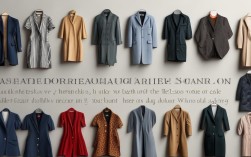Clothing is more than just fabric stitched together—it carries cultural significance, historical context, and personal expression. Understanding the origins and meanings of English words for different garments can deepen our appreciation for fashion and language. Let’s explore some of these terms and their fascinating backgrounds.

Shirt
The word shirt traces back to the Old English scyrte, meaning a short garment. It shares roots with the Old Norse skyrta and German Schürze (apron). Originally, shirts were simple undergarments, often made of linen or wool. Over time, they evolved into outerwear, with styles like the dress shirt becoming symbols of professionalism.
Pants
Pants is short for pantaloons, derived from the Italian Pantalone, a comedic character in 16th-century theater who wore tight trousers. In British English, trousers is more common, originating from the Gaelic triubhas, meaning close-fitting leg coverings. The American preference for pants reflects linguistic evolution influenced by immigrant dialects.
Dress
The term dress comes from the Old French drecier (to arrange or straighten), reflecting its role in presenting a polished appearance. Historically, dresses were status symbols—elaborate designs indicated wealth, while simpler cuts denoted practicality. Today, dresses range from casual sundresses to formal gowns, each carrying its own stylistic message.
Jacket
Jacket stems from the French jaquette, a diminutive of jaque (a medieval short tunic). Early jackets were military garments, designed for mobility. The modern jacket serves both function and fashion, from denim jackets symbolizing rebellion to blazers representing authority.
Sweater
Originally called a jumper in British English, the word sweater emerged in the 19th century when athletes wore wool garments to induce sweating and lose weight. Over time, it became associated with warmth and comfort. The term pullover refers to its design—pulled over the head—while cardigan honors the 7th Earl of Cardigan, who popularized the buttoned style.
Skirt
Skirt shares roots with shirt, both descending from the Old Norse skyrta. Unlike pants, skirts have been worn across cultures for millennia, often reflecting gender norms. The kilt, for example, is a traditional Scottish skirt with cultural pride, while modern mini-skirts became symbols of liberation in the 1960s.

Suit
A suit comes from the French suivre (to follow), referring to a matching set of garments. The business suit emerged in the 19th century as a standard for professionalism, replacing elaborate aristocratic attire. Its design—tailored and structured—communicates authority and conformity.
Jeans
The word jeans originates from Genoa, Italy, where a sturdy cotton fabric called jean was produced. Later, Levi Strauss reinforced this fabric with rivets, creating durable work pants for miners. Today, jeans symbolize casual wear, rebellion, and timeless style.
T-Shirt
Originally an undergarment for U.S. Navy sailors in the early 20th century, the T-shirt got its name from its T-shaped silhouette. Post-World War II, it transitioned into mainstream fashion, becoming a canvas for self-expression through prints and slogans.
Hat
Hat comes from the Old English hæt, related to the Proto-Germanic hattuz. Hats have served practical and symbolic purposes—sun protection, social rank, or religious significance. The bowler hat symbolized British bankers, while the baseball cap became an emblem of American casual culture.
Scarf
Derived from the Old French escharpe (pilgrim’s pouch), scarves were initially functional, used for warmth or as military insignia. Today, they range from silk fashion accessories to winter necessities, with patterns often reflecting cultural heritage.
Socks
The word sock comes from the Latin soccus, a light slipper worn by Roman actors. Early socks were made from animal hides, later evolving into knitted wool and cotton. Athletic socks, dress socks, and novelty socks each serve distinct purposes in modern wardrobes.

Gloves
Glove originates from the Old English glof, meaning a covering for the hand. Historically, gloves indicated social status—fine leather gloves were luxury items, while work gloves protected laborers. Today, they blend function (winter gloves) with fashion (evening gloves).
Coat
The term coat comes from the Old French cote, a long outer garment. Coats evolved from medieval robes to tailored overcoats, with styles like the trench coat gaining military origins before entering civilian fashion.
Underwear
Underwear is a straightforward term—garments worn beneath outer clothes. However, its cultural weight is immense. Corsets symbolized restraint, while modern lingerie celebrates body positivity. The word briefs comes from their short cut, while boxers mimic the loose fit of boxing shorts.
Shoes
Shoe comes from the Old English scōh, related to the German Schuh. Footwear has always reflected practicality and status—from ancient sandals to high heels, which originated in Persian cavalry before becoming a feminine fashion staple.
Tie
The necktie evolved from the Croatian mercenaries’ scarves in the 17th century, called cravats (from Hrvat, meaning Croat). Modern ties are symbols of professionalism, with patterns like stripes or paisley conveying subtle messages.
Belt
Belt comes from the Old English belt, related to the Latin balteus (sword strap). Beyond holding up pants, belts have been status symbols—think of the ornate buckles in historical military uniforms.

Pajamas
Borrowed from Hindi pāyjāma (leg garment), pajamas were adopted by British colonists in India. Initially loose trousers, they became synonymous with sleepwear, representing comfort and relaxation.
Vest
In American English, a vest is a sleeveless garment worn over a shirt; in British English, it refers to an undershirt. The term comes from the French veste (jacket), highlighting how regional dialects shape fashion terminology.
Language and fashion intertwine, with each garment’s name carrying centuries of history. Whether it’s the practicality of jeans or the formality of a suit, these words reveal how clothing shapes identity and culture. Next time you pick an outfit, consider the stories woven into its name.



